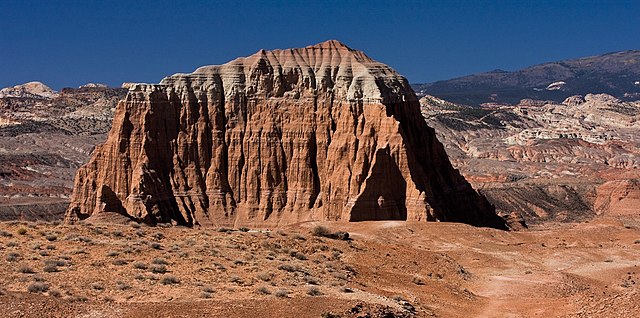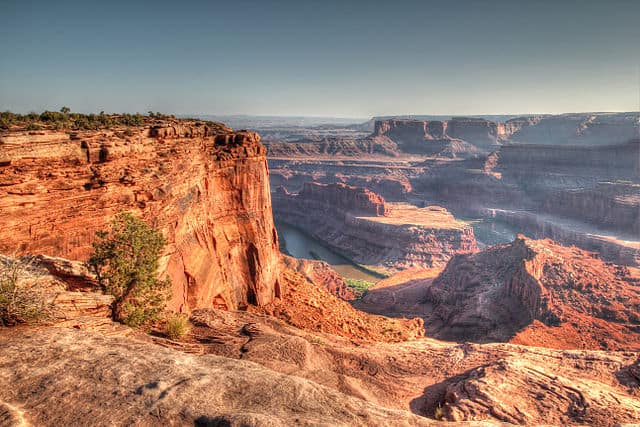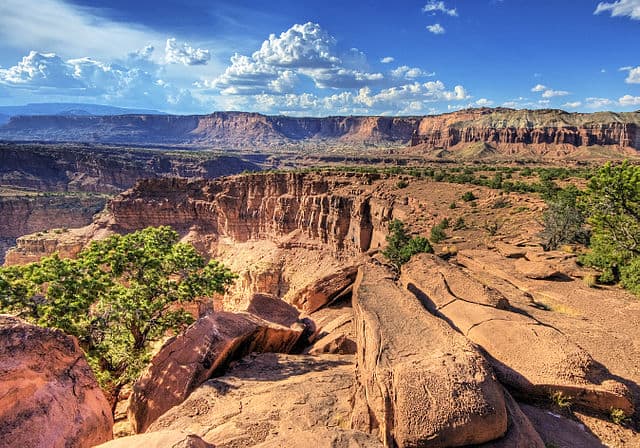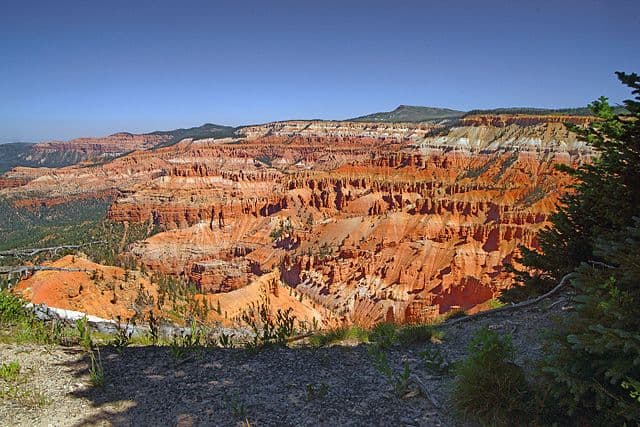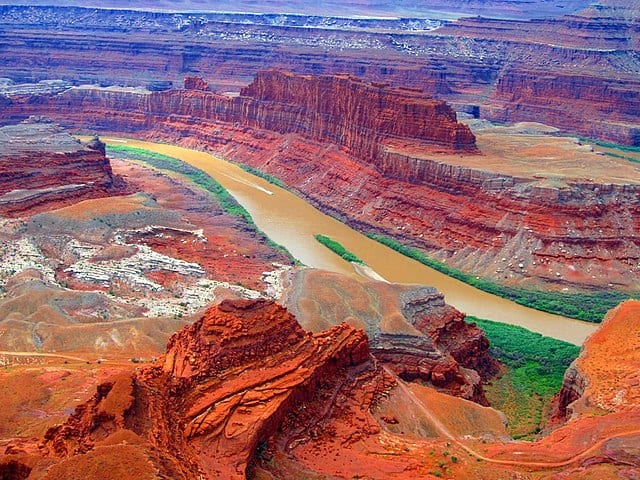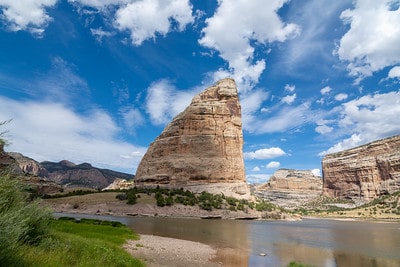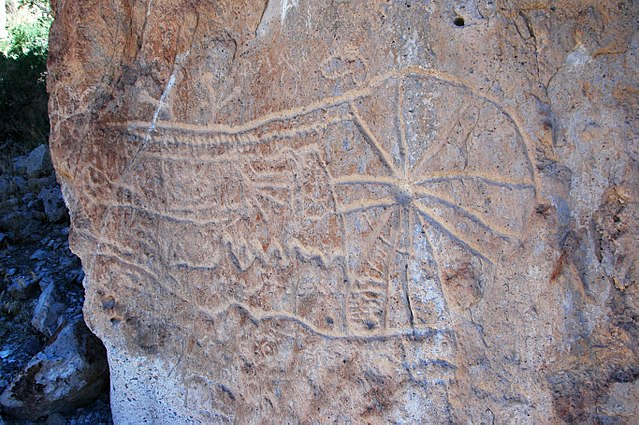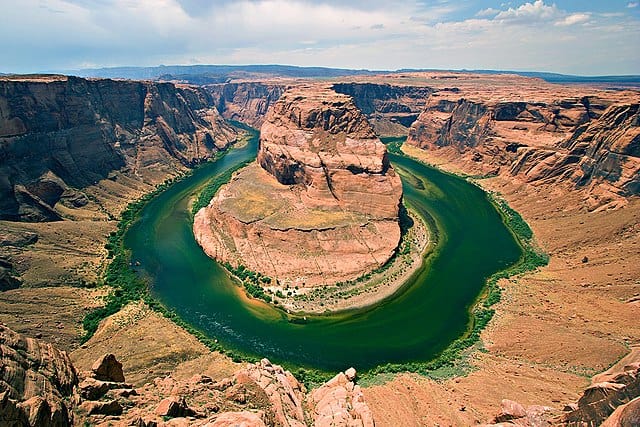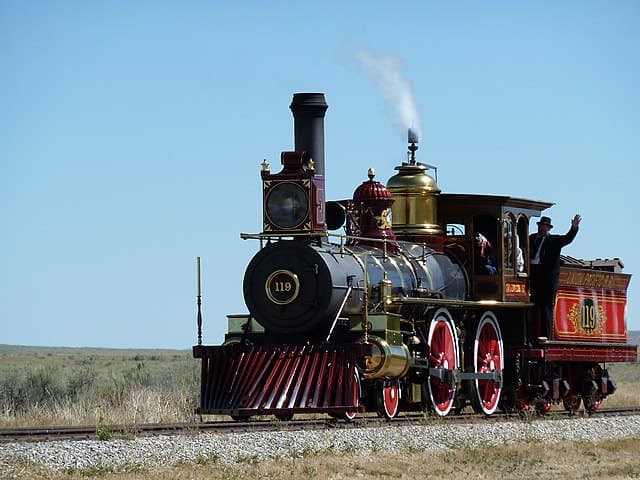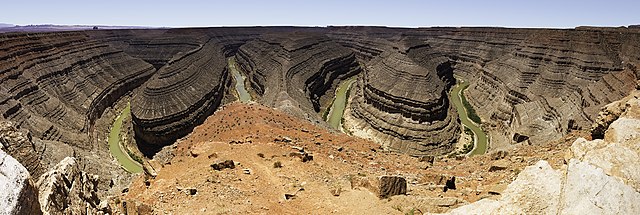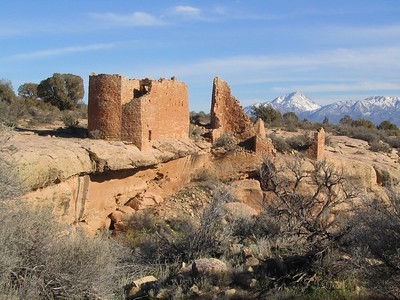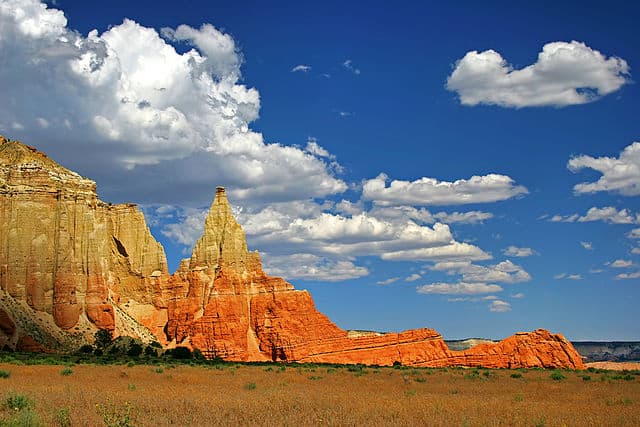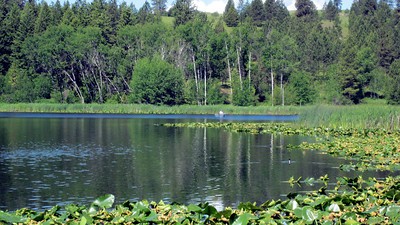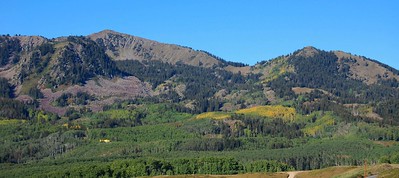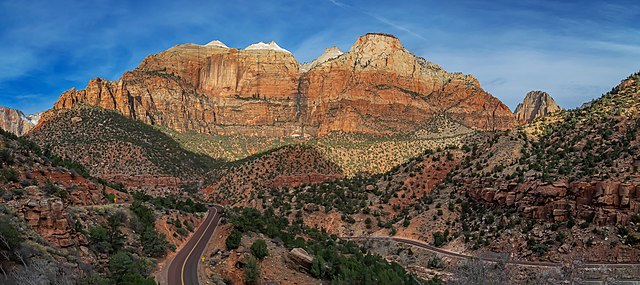Spanned by the Wasatch Range mountains and vast tracts of arid desert, the western state of Utah boasts some spectacular natural landscapes and wild terrain, all of which can be experienced at a wealth of state and national parks.
Antelope Island State Park is home to the immense Great Salt Lake, whose buoyant waters attract swimmers, sunbathers, and water sports lovers, while the Canyonlands National Park features spectacular rock formations and soaring pinnacles.
Cedar Breaks National Monument’s majestic amphitheater provides spectacular photographic opportunities, and the Hovenweep National Monument is home to some of North America’s most ancient and remarkable ruins.
Utah’s incredible landscapes are ideal for camping and whether you pitch a tent or prefer the luxury of an RV, there is nothing better than being out in the great outdoors and surrounded by natural beauty and tranquility.
So, pack your gear and hit the road – here are some of the top spots to set up camp and soak up the spectacular natural surroundings of the Utah landscape.
Jailhouse Rock in the Capitol Reef National Park, Utah by Greg Willis / WikiCommons / CC BY-SA 3.0
Antelope Island State Park
Antelope Island State Park is a beautiful park and recreation area on a 42-square-mile island in the Great Salt Lake. The largest of ten islands in the lake, Antelope Island State Park lies in the southeastern portion of the lake near Salt Lake City and becomes a peninsula when the lake is at extremely low levels.
The lake is extremely salty and does not support fish but is home to large numbers of brine shrimp which attract a variety of waterfowl, making for excellent birdwatching. Antelope Island is renowned for its scenic beauty with majestic mountains and rolling hills, pristine beaches, and shimmering waters, particularly at Buffalo Point and White Rock Bay.
There are three campgrounds with a total of 92 campsites in Antelope Island State Park. These campsites are primitive with pit toilets and no shower facilities. You will find modern facilities, including hot showers and drinking water at the day-use area, approximately one-half mile away. Activities in the park include swimming, sunbathing, kayaking, canoeing, bird and wildlife watching, visiting the historic Fielding Garr Ranch, horseback riding, and photography.
4528 West 1700 South, Syracuse, Utah 84075, Phone: 801-773-2941, https://stateparks.utah.gov/parks/antelope-island
Antelope Island State Park in Utah by m01229 / WikiCommons / CC BY-SA 2.0
Arches State Park
Arches National Park is a national park next to the Colorado River just north of Moab that features more than 2,000 natural sandstone arches, including the world-renowned Delicate Arch.
The aptly named park spans 76,679 acres and also boasts a wealth of significant geological resources and formations, hoodoos, gargoyles, craggy sandstone towers and turrets, and spectacular panoramic views of the surrounding wilderness and distant snow-capped mountains.
A notable feature in the park is Landscape Arch, which measures 306 feet with the second-longest span in the world. Activities in the park include exploring the Visitor’s Center which features a wealth of information on the history of the area and the formation of the unique arches, hiking, mountain biking, climbing, scenic drives, camping, and photography.
Devil’s Garden Campground is the only campground at Arches National Park and facilities include drinking water, picnic tables, grills, and both pit-style and flush toilets.
Moab, Utah 84532, Phone: (435) 719-2299, https://www.nps.gov/state/ut/index.htm
Arches National Park, Utah by Palacemusic / WikiCommons / CC BY-SA 3.0
Bear Lake State Park
Bear Lake State Park is set along the shores of Bear Lake on the Idaho border and features three recreation areas, namely East Side, Bear Lake Marina, and Rendezvous Beach. Formed 28,000 years ago by earthquake activity and resting at an elevation of 5,923 feet, Bear Lake is 20 miles long and eight miles wide covers 112 square miles, and offers a wealth of family-friendly activities and watersports.
Renowned for its striking green-blue waters which are the result of calcium carbonates suspended in the lake, the lake provides land and water-based activities all year round from swimming, boating, fishing, kayaking, and waterskiing to hiking, mountain biking, horseback riding, picnicking and camping.
There are several campgrounds in Bear Lake State Park. Rendezvous Beach is on the south shore near Laketown, there are three group-use campsites (Willow, Cottonwood, and Big Creek), and three individual campsite campgrounds (Birch, the Big Creek, and the Cottonwood). All these campgrounds provide restrooms with flush toilets and hot showers, while Birch and Big Creek offer utility hookups of power, water, and sewer.
There are four primitive campgrounds and two group campsites with drinking water. The four primitive campgrounds are first-come, first-served, while the group campsites can be reserved.
940 N Bear Lake Blvd, Garden City, UT 84028, USA, Phone: +1 435-946-3343, https://stateparks.utah.gov/parks/bear-lake
Bear Lake State Park by kla4067 / WikiCommons / CC BY 2.0
Bryce Canyon National Park
Bryce Canyon National Park is a sprawling reserve in southern Utah that is famous for its crimson-colored, spire-shaped rock formations known as hoodoos, which are formed by frost weathering and stream erosion, as well as other unusual geological formations.
Bryce Canyon is the main feature of the park, which is a collection of several giant natural amphitheaters found along the eastern side of the Paunsaugunt Plateau. Spanning 35,835 acres, the park has several excellent lookout points, including Sunrise Point, Sunset Point, Inspiration Point, and Bryce Point, which offer great photographic opportunities, with prime viewing times at sunrise and sunset. Activities in the park include hiking, backpacking, camping, scenic driving, stargazing, and cross-country skiing in the winter.
Bryce Canyon National Park has two campgrounds, North and Sunset Campgrounds. Both sites are close to the Bryce Canyon Lodge, the main Bryce Amphitheater, and the Visitor Center. North Campground is a year-round site with paved roads, flush toilets, and drinking water, as well as picnic tables, fire rings, and grills at each campsite.
Sunset Campground is centrally located within the park and close to the trailheads at Sunset Point. It has 49 sites for large RVs, flush toilets, and drinking water, as well as picnic tables, fire rings, and grills at each campsite. During the spring, summer, and fall months, laundry and shower facilities are available at the general store nearby.
Unnamed Road, Bryce, Bryce, Utah 84764, Phone: +1 435-834-5322, https://www.nps.gov/brca/
Bryce Canyon National Park by W. Bulach / WikiCommons / CC BY-SA 4.0
Canyonlands National Park
Famed for its dramatic desert landscapes carved by the Colorado River, the southeastern Utah preserve of Canyonlands National Park is home to breathtaking rock formations, remote canyons, and towering rock pinnacles.
Notable features in the park include the huge, flat-topped mesa with panoramic overlooks known as Island in the Sky, the remote canyons of the Maze, the white-water rapids flowing through Cataract Canyon, the soaring pinnacles known as the Needles, Horseshoe Canyon’s Native American rock painting.
Canyonlands National Park is a popular recreational destination offering a wealth of activities such as hiking, mountain biking, backpacking, camping, climbing, four-wheel driving, kayaking, canoeing, and white-water rafting.
Located in a remote district located within the southern portion of the park, Canyonlands National Park Needles District Campground offers limited services and is best suited to tents and small, self-contained campers and RVs. There are no RV hook-ups, and individual campsites have picnic tables and fire rings. The campground does not have electricity, showers, or a dump station, but drinking water and flush toilets are available in the campground.
Utah, USA, Phone: +1 435-719-2313, https://www.nps.gov/cany/
Canyonlands National Park by katsrcool / WikiCommons / CC BY 2.0
Capitol Reef National Park
Located in Utah’s south-central desert and surrounding a geologic monocline (a wrinkle on the earth) extending almost 100 miles known as the Waterpocket Fold, the Capitol Reef National Park spans 378 square miles and boasts some spectacular landscapes of golden sandstone, beautiful canyons, and striking rock formations.
Notable features in the park include the Hickman Bridge arch, the Chimney Rock pillar, the white sandstone domes of Capitol Reef, and the towering monoliths of Cathedral Valley in the north. Capitol Reef National Park offers a variety of activities such as hiking, mountain biking, backpacking, camping, climbing, stargazing, and ranger programs.
Located next to the Fremont River and surrounded by fruit orchards, Fruita Campground provides campers with an oasis within the desert. The campground has 71 sites with picnic tables, fire pits, and grills, however, no individual water, sewage, or electrical hookups. There is an RV dump and potable water fill station and restrooms have running water and flush toilets, but no showers.
Torrey, UT 84775, Phone: 435-425-3791, https://www.nps.gov/care/index.htm
Capitol Reef National Park by Wolfgang Staudt / WikiCommons / CC BY 2.0
Cedar Breaks National Monument
Cedar Breaks National Monument is a natural amphitheater, three miles in diameter and over 2,000 feet deep with a rim elevation of over 10,000 feet above sea level.
Tucked away in the mountains above Cedar City, the U.S. National Monument boasts a variety of interesting things to see and do from high-elevation camping and excellent hiking trails to groves of ancient trees and out-of-this-world views along the Circle of Painted Cliffs.
Cedar Breaks’ majestic amphitheater is situated on the western edge of the Markagunt Plateau and provides spectacular photographic opportunities, while a modern campground is located on the edge of an alpine meadow in the dark-sky park is the best place for astral viewing and stargazing.
Resting at 10,000 feet elevation and surrounded by meadows of wildflowers in the summer, Point Supreme Campground is a comfortable place to camp during the hotter summer months. It has
25 campsites and accommodates both tents and RVs. Restrooms with flushing toilets are available and hot showers can be accessed using a code.
UT-143, Brian Head, UT 84719, USA, Phone: (435) 586-9451 or (435) 586-0787, https://www.nps.gov/cebr/
Cedar Breaks National Monument by Fsendek1904 / WikiCommons / CC BY-SA 4.0
Dead Horse Point State Park
Dead Horse Point State Park is a state park near Moab that covers 5,362 acres (2,170 ha) of breathtaking desert landscapes and dramatic panoramic vistas of the Canyonlands National Park and the Colorado River.
Named after a natural corral by cowboys in the 19th century, where horses often died of exposure, Dead Horse Point rests 2,000 feet above a gooseneck in the Colorado River and features several incredible overlooks, picnic areas, a campground, visitor’s center, and a 9-mile (14 km) loop hiking trail. The visitor center offers a wealth of information on the history, geology, and biology of the area.
The park also features a mountain bike trail called Intrepid Trail with loops of varying levels of difficulty and is famous for being featured in the final ‘Grand Canyon’ scene of the 1991 film Thelma & Louise.
There are two campgrounds and a yurt area within the park. The Kayenta Campground is small and remote in a beautiful red rock desert environment with just 22 primitive sites, while the Wingate Campground has 20 RV campsites with tent pads, 11 tent-only campsites, and four new yurts. There are no showers in the park, however, there is potable water. Other amenities include a dump station, modern restrooms with vault toilets, picnic tables, and a sewage disposal station.
1594 W. North Temple, Suite 116Salt Lake City, Utah, http://stateparks.utah.gov/parks/dead-horse/
Dead Horse Point State Park by Roger Sylvia / WikiCommons / CC BY-SA 3.0
Dinosaur National Monument
Located on the southeast flank of the Uinta Mountains at the confluence of the Green and Yampa Rivers, Dinosaur National Monument is a United States National Monument that preserves a treasure trove of fossils in the area.
Located on the Utah border with Colorado, Northeastern Utah’s dinosaur legacy comes to life in the park with a variety of activities to enjoy from touring the dinosaur quarry which features an array of ancient bones and fossils, hiking the nature trails, heading on driving tours around the park, white-water river running, backpacking, fishing, mountain biking, bird-watching, and photography. Dinosaur National Monument is also a dark park, offering some of the best stargazing and astral viewing in the state.
Located in a grove of cottonwood trees along the banks of the Green River, the eponymous Green River Campground boasts 80 campsites suitable for tents or RVs. Each site has a picnic table and fire pit and drinking water and flush toilets are available for campers. There are no showers or water/electrical hook-ups/dump stations for recreational vehicles.
11625 E 1500 S, Jensen, UT 84035, USA, Phone: +1 970-374-3000, https://www.nps.gov/dino/
Dinosaur National Monument by Matthew Dillon / Flickr / CC BY 2.0
Fremont Indian State Park
Located in the Clear Creek Canyon in Sevier County, Fremont Indian State Park and Museum is a state park that preserves and protects the archaeological remains of the Fremont culture.
Opened in 1987, the park features a museum that preserves treasures from the site, including arrowheads, baskets, and pottery, as well as informative exhibits and a film about the Fremont Indian village that was uncovered, hands-on activities, and guided rock art tours.
There are several hiking trails around the park as well as two campgrounds, Castle Rock Campground, and Sam Stowe Campground. The Sam Stowe Campground offers seven full hook-up sites with water, electricity, and sewerage hookups, and there is a large overnight site for groups with a pavilion and RV power hookups.
The Castle Rock campground is smaller and tucked away in a canyon approximately half a mile from the visitor center and it offers a flush toilet and running fresh drinking water.
3820 Clear Creek Canyon Rd, Sevier, UT 84766, USA, Phone: +1 435-527-4631, https://stateparks.utah.gov/parks/fremont-indian
Fremont Indian-carved petroglyphs in the Fremont Indian State Park by James St. John / WikiCommons / CC BY 2.0
Glen Canyon National Recreation Area
Glen Canyon National Recreation Area is a state park and recreation area around Lake Powell and the lower Cataract Canyon.
Spanning 1,254,429 acres of mostly desert, the park is also a conservation unit of the National Park Service and borders several notable parks and monuments, including the Capitol Reef National Park and Canyonlands National Park, the Navajo Nation, Grand Canyon National Park, Grand Staircase-Escalante National Monument, and Vermilion Cliffs National Monument.
The park was established for preservation and recreation and features four camping grounds, five marinas, two small airports, and houseboat rentals on Lake Powell. Lees Ferry Campground has 54 designated sites with no hookups, but grills are provided and there is an RV dump station. Amenities include modern restrooms, potable water, and a boat launching ramp.
Lone Rock Beach Primitive Camping Area offers primitive camping on the beach or in the dunes without designated campsites. Amenities include four micro-flush toilets, six vault toilets, a comfort station, an outdoor cold shower, a dump station, and potable water (seasonal).
Stanton Creek Primitive Camping Area is a designated primitive camping area with no designated sites, no potable water, and no pit toilets. Beehives Campground has six designated sites with picnic tables, however, there are no hookups, dump stations, or restrooms.
4304 Bullfrog, Lake Powell, UT 84533, United States, Phone: +1 928-608-6200, https://www.nps.gov/glca/
Glen Canyon National Recreation Area by User:Moondigger / WikiCommons / CC BY-SA 2.5
Goblin Valley State Park
Located along the San Rafael Reef, Goblin Valley State Park is a state park that features thousands of formations of towering, mushroom-shaped rock pinnacles known as hoodoos and referred to locally as goblins.
Spattered with sandstone goblins and fascinating rock formations, the landscapes in the park are often compared to those on Mars, offering an other-worldly and unforgettable experience for the whole family.
In addition to exploring the nooks and gnomes, other activities in the park include hiking, mountain biking, camping, canyoneering in the nearby Little Wild Horse Canyon, nature study, and soaking up the incredible views from lookout points along the Wild Horse Mesa Mountain Bike Trail.
The Goblin Valley State Park campground has 24 sites, one group site, and two yurts, with centrally located restrooms with vault toilets and hot shower facilities. Amenities include potable water, a dump station, and a sewage disposal station.
Goblin Valley Rd, Green River, UT 84525, USA, Phone: 435-275-4584, https://stateparks.utah.gov/parks/goblin-valley
Goblin Valley State Park by Enrico Stirl a.k.a. Germaneon / WikiCommons / CC BY-SA 3.0
Golden Spike National Historic Site
The Golden Spike National Historic Site is a National Historic Site at Promontory Summit, north of the Great Salt Lake that commemorates the completion of the first Transcontinental Railroad and the place where the final joining of the Central Pacific Railroad and the first Union Pacific Railroad was signified by the driving of the ceremonial Golden Spike.
Encompassing 2,735 acres, the park has several notable features and activities, including a visitor’s center that displays the original tracks and numerous railroad-related relics, as well as two life-size, fully operational, replicas of the Jupiter and No. 119 steam locomotives on the tracks.
The Golden Spike National Historic Site also offers two short auto tour routes – the West Grade Auto Tour and the East Grade Auto Tour which explore the railroad routes and shouldn’t be missed.
6200 North 22300th Street West, Corinne, UT 84307, USA, Phone: +1 435-471-2209
Golden Spike National Historic Site by National Park Service – Golden Spike National Historic Site / WikiCommons / CC BY 2.0
Goosenecks State Park
Goosenecks State Park is a state park and recreation area overlooking a broad meander of the San Juan River near the southern border of Utah and boasts spectacular landscapes that highlight 300 million years of geological activity.
Located a short distance from Mexican Hat, the primitive state park is named after the deep canyon above the sinuous river meander known as a gooseneck and affords impressive views of one of the most striking examples of an entrenched river meander on the continent.
The San Juan River, which begins in the mountains of Colorado and travels to its junction with the Colorado River, twists and turns through the meander on its way to Lake Powell, carving its way through the desert 1,000 feet below.
Goosenecks State Park is one of the best spots to see such magnificent erosional feats from high above the river while enjoying a picnic or camping. The park also offers spectacular star-gazing and astral viewing.
Goosenecks State Park is primitive, boasting a picnic area and an incredible overlook as its only amenities. The park has no hiking trails, and while it may not be a destination in and of itself, it’s worth checking out if you’re heading to or coming from nearby Cedar Mesa, Utah.
The Goosenecks State Park campground is primitive with just eight sites with picnic tables and fire pits, pit toilets, and incredible panoramic views of the sinuous San Juan River below. Amenities include
UT-316, Mexican Hat, UT 84531, USA, Phone: (435) 678-2238, https://stateparks.utah.gov/parks/goosenecks
Goosenecks State Park by www.Gernot-Keller.com (User: Gernot Keller) / WikiCommons / CC BY 3.0
Hovenweep National Monument
Located on the Cajon Mesa of the Great Sage Plain between Cortez, Colorado, and Blanding in southeastern Utah, Hovenweep National Monument is home to some of North America’s most ancient and remarkable ruins.
The park was established to protect several abandoned tower structures that were built by ancestral Puebloans for either storage, defense, celestial observation, or as homes and have stood for over 700 years.
The park has a visitor’s center which offers a host of information on the structures, the ancient Puebloans, and the history of the region, as well as several hiking trails and roads leading to and around the structure. Visitors can also enjoy ranger-led talks, tours, and interpretive programs during the spring.
There is a 31-site campground near the visitor center at the Hovenweep National Monument and is first-come, first-served. Open year-round, the campground is designed for tent camping, though a few sites will accommodate RVs up to 36 feet long. Sites include tent pads, fire rings, and picnic tables with shade structures; there are no hookups available.
McElmo Route, Cortez, CO 81321, Phone: (970) 562-4282 x 5
Hovenweep National Monument by Ken Lund / Flickr / CC BY 2.0
Kodachrome Basin State Park
Resting 5,800 feet above sea level, Kodachrome Basin is situated 20 miles southeast of Bryce Canyon National Park and features geologically significant sandstone spires and columns called sand or sedimentary pipes, believed to be found nowhere else on earth.
Home to more than 67 of these monolithic stone spires ranging from two to 52 meters that accentuate multi-hued sandstone layers revealing 180 million years of geologic time, the area and park were named Kodachrome after the popular color film by the National Geographic Society due to the spectacular natural colors and beauty.
Activities in the park include hiking, guided horseback riding, mountain biking, and visiting the intricate double arch known as Grosvenor Arch, one of the most impressive in the state.
The quiet, beautiful campground offers modern facilities in a desert landscape. Amenities in the campground include modern restrooms and a comfort station with hot showers and vault toilets, a dump station, picnic tables, potable water, and firewood for sale.
Cannonville, UT 84718, USA, Phone: +1 435-679-8562, https://stateparks.utah.gov/parks/kodachrome-basin
Kodachrome Basin State Park by Photographersnature / WikiCommons / CC BY-SA 3.0
Natural Bridges National Monument
Located at the junction of White Canyon and Armstrong Canyon about 50 miles northwest of the Four Corners boundary of southeast Utah, Natural Bridges National Monument features a magnificent naturally carved bridge of white Permian sandstone from the Cedar Mesa Formation that gives White Canyon its name.
The bridge, which is the 13th largest natural bridge in the world and is called Sipapu, is one of three bridges in the park, including Kachina and Owachomo, which are all Hopi names. Formed through erosion by water flowing in the stream bed of the canyon, the bridges can be viewed from Bridge View Drive, a road that winds through the park past the bridges, as well as from several hiking trails leading down to the bases of the bridges.
Nestled among groves of juniper trees and conveniently located next to the visitor center off the main park road, the Natural Bridges campground is first-come, first-served, and open year-round. Each site has a fire grill, picnic table, and tent pad, but no running water, electricity, or hookups.
Lake Powell, UT 84533, USA, Phone: +1 435-692-1234
Natural Bridges National Monument by Servantsheart8 / WikiCommons / CC BY-SA 4.0
Rainbow Bridge National Monument
Rainbow Bridge National Monument is the largest natural bridge in the world, spanning 290 feet in height and 270 feet in width. Managed by the Glen Canyon National Recreation Area, Rainbow Bridge is a sacred Navajo symbol considered to be one of the deities responsible for creating clouds, rainbows, and rain – the essence of life in the desert.
Rainbow Bridge National Monument can be explored by way of two hiking trails that traverse through rough canyon country on Navajo Tribal Lands and terminate at Rainbow Bridge National Monument. The trails feature homes, hogans, sweat lodges, and archeological sites along the way and respect should be paid to the ancient Navajo Indian history and culture.
Lake Powell, UT 84533, USA
Rainbow Bridge National Monument by RuggyBearLA / WikiCommons / CC BY 2.0
Red Fleet State Park
Red Fleet State Park is a state park and public recreation area that features a 750-acre reservoir and a fossil trackway of dinosaur footprints. Located 10 miles north of Vernal, Red Fleet State Park is surrounded by red slick rock formations and was named after three large Navajo sandstone outcrops that jut up from the reservoir and look like a fleet of ships.
Resting at an elevation of 5,500 feet, the park boasts some interesting fauna and flora, including various cacti, juniper, and sagebrush, along with bobcat, coyote, badgers, and several species of raptors such as the golden eagle.
The year-round park facilities include a sandy beach, a boat launching ramp, fish cleaning stations, picnic areas, campsites, and restrooms. Red Fleet State Park boasts 29 campsites, all with tables, grills, and firepits. Several sites have electrical and water hookups.
8750 North Highway 191, Vernal, UT 84078, USA, Phone: +1 435-789-6614, https://stateparks.utah.gov/parks/red-fleet
Red Fleet State Park by Scott Catron / WikiCommons / CC BY-SA 2.0
Sand Hollow State Park
The 20,000-acre Sand Hollow State Park surrounds the 1,322-acre Sand Hollow Reservoir and features a vast recreation area on Sand Mountain for off-road vehicles. The park is renowned for its visually stunning red rock formations, amazing red sand beaches, and excellent hiking trails.
This easy-to-access park offers a variety of activities for adventurers, ranging from water-based recreation such as swimming, kayaking, boating, fishing, and waterskiing to hiking, mountain biking, camping, and off-road driving ATV and OHV driving on more than 6,000 acres of dunes.
Sandpit Campground offers 19 campsites, five group sites, six power sites with standard hookup amenities, and ATV access.
3351 Sand Hollow Rd, Hurricane, UT 84737, USA, Phone: 435-680-0715, https://stateparks.utah.gov/parks/sand-hollow
Sand Hollow State Park by Dylan Duvergé / WikiCommons / CC BY 2.0
Snow Canyon State Park
Snow Canyon State Park is a state park near Ivins that features a spectacular canyon carved from the red and white Navajo sandstone in the Red Mountains, along with other awe-inspiring geological features such as lava flows and tubes, cinder cones, and dunes.
Named after early Mormon settlers, Erastus and Lorenzo Snow, the state park boasts two stunning canyons, West Canyon and Snow Canyon, that gouge deeply into the sandstone of the Red Mountains and run southwards before converging in the middle of the park, offering visitors breathtaking views.
Snow Canyon State Park is open all year round and features facilities such as campsites for tents and RVs, hiking and mountain biking trails, and bird-watching spots. The campground has 14 RV sites with water and electrical hook-ups and 17 multi-use campsites with full amenities including modern restrooms with hot showers and vault toilets, a dump station, picnic tables, fire pits, grills, potable water, and firewood.
1002 Snow Canyon Dr, Ivins, UT 84738, USA, Phone: +1 435-628-2255, https://stateparks.utah.gov/parks/snow-canyon
Starvation State Park
The 3,500-acre Starvation State Park is a state park and recreation area in northeastern Utah featuring the 3,495-acre Starvation Reservoir.
Located four miles northwest of the town of Duchesne, the year-round park lies at an elevation of 5,712 feet and features several recreational facilities, including a marina with RV and primitive campgrounds, a boat launching ramp and dock, fish cleaning stations, a sandy beach, restrooms with showers, a group-use pavilion, and sewage disposal.
Popular activities include fishing, boating, swimming, sunbathing, waterskiing, kayaking, hiking, mountain biking, and camping.
24220 W 7655 S State Park Rd, Duchesne, UT 84021, USA, Phone: +1 435-738-2326, https://stateparks.utah.gov/parks/starvation
Starvation Lake Campground by Washington DNR / Flickr / CC BY 2.0
Wasatch Mountain State Park
Wasatch Mountain State Park is a 23,000-acre preserve and state park within the Wasatch Back area in northern Utah that boasts spectacular natural scenery and provides year-round recreation.
Located on the north and western edges of the Heber Valley in Wasatch County, the Wasatch Mountain State Park has two historic areas, namely the Historic Tate Barn and Huber Grove, which are essential architectural landmarks and symbols for the Heber Valley.
Activities in the park include hiking, mountain biking, camping, picnicking, off-highway vehicle, horseback riding, and golf at one of four popular 18-hole golf courses. The campground in the park has sites with full hookups and sites with water and power and tents are only allowed where indicated. Full amenities include modern restrooms with hot showers and vault toilets, a dump station, picnic tables, fire pits, grills, potable water, and firewood.
1281 Warm Springs Rd, Midway, UT 84049, USA, Phone: 435-654-1791, https://stateparks.utah.gov/parks/wasatch-mountain
Wasatch Mountain State Park by JR P / Flickr / CC BY 2.0
Zion National Park
Zion National Park is a nature preserve and national park distinguished by the magnificent steep red cliffs of the Zion Canyon. Located in southwestern Utah near the city of Springdale, the 229-square-mile park surrounds the Zion Canyon, a 15-mile long and 2,640-foot deep chasm with steep reddish and tan-colored walls of Navajo Sandstone that have been eroded by the North Fork of the Virgin River.
Due to its unique location at the junction of the Colorado Plateau, Great Basin, and the Mojave Desert regions, the park is home to a diverse range of life zones, ranging from desert and coniferous forests to riparian and woodlands.
The park can be explored by the Zion Canyon Scenic Drive which boasts beautiful views of the Virgin River and Emerald Pools, which have waterfalls and a hanging garden. Popular activities include fishing, boating, swimming, kayaking, hiking, mountain biking, and camping.
Zion National Park has three campgrounds: Watchman Campground in Zion Canyon, which is open all year round; South Campground; and the Lava Point Campground on the Kolob Terrace Road (closed in winter).
1101 Zion Park Blvd, Springdale, UT, 84767, Phone: (435) 429-1555, https://www.nps.gov/zion/


Jill Miller is the founder of Your RV Lifestyle. Trading corporate America for the open road, Jill, along with her partner Jose, began their RV journey, making an unconventional start by wintering in New Jersey. A natural adventurer, she was motivated by a desire to explore the USA and beyond, embracing the varied landscapes, communities, and cultures across the country.
For Jill, the allure of RV living was not about material accumulation, but rather the pursuit of an adventurous, fulfilling lifestyle. A lover of golf, bicycling, hiking, and line dancing, she has carried her passions across the country, engaging with them in diverse settings. Jill’s commitment to the RV lifestyle came after years of careful research, numerous consultations with RV owners, and personal trials, including living in a rental RV.
